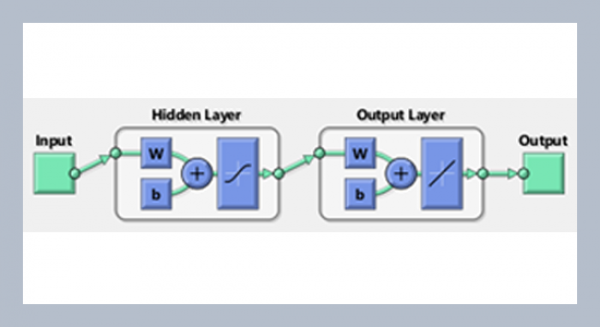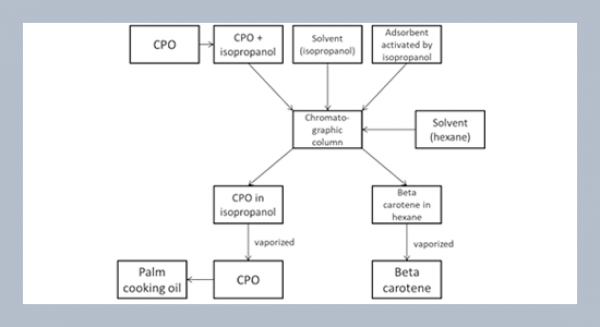D. Krishnaa*, K. Siva Krishnaa, and R. Padma Sreeb aDepartment of Chemical Engineering, M.V.G.R. College of Engineering, Vizianagaram, India
bDepartment of Chemical Engineering, A.U. Collge of Engg (A), Visakhapatnam, India
Download Citation:
|
Download PDF
The potential use of Borasus flabellifer coir powder for the removal of chromium (VI) from aqueous solution has been investigated in batch mode experiments. Percentage removal of chromium (VI) is found to be 97.6% at pH 2, amount of adsorbent dosage of 0.5 g in 50 mL solution and temperature of 303 K. Influences of parameters like initial chromium (VI) concentration (5-30 mg/L), pH (1-3), and biomass dosage (10-14 g/L) on chromium (VI) adsorption were examined using response surface methodology. The Box-Behnken experimental design in response surface methodology was used for designing the experiments as well as for full response surface estimation and 15 trials as per the model were run. The optimum conditions for maximum removal of chromium (VI) from an aqueous solution of 20 mg/L were as follows: adsorbent dosage (10.1869 g/L), pH 1.9 and initial chromium (VI) concentration (6.3244 mg/L). The high correlation coefficient (R2 =0.989) between the model and the experimental data showed that the model was able to predict the removal of chromium (VI) from aqueous solution using B. flabellifer coir powder efficiently.ABSTRACT
Keywords:
Box-behnken design (BBD); borasus flabellifer coir powder; chromium (VI); adsorption.
Share this article with your colleagues
[1] Volesky, B. and Holan, Z.R. 1995. Biosorption of heavy metals. Biotechnology Progress, 11: 235-250.REFERENCES
[2] Veglio, F. and Beolchini, F. 1997. Removal of metals by biosorption: a review. Hydrometallurgy. 44: 301-316.
[3] Kowalshi, Z. 1994. Treatment of chromic tannery wastes. Journal of Hazardous Materials, 39: 137-144.
[4] Sikaily, A. E., Nemr, A. E., Khaled, A., and Abdelwahab, O. 2007. Removal of toxic chromium from waste water using green alga Ulva lactuca and its activated carbon. Journal of Hazardous Materials, 148: 216-228.
[5] Li, H., Li, Z., Liu, T., Xiao, X., Peng, Z., and Deng, L. 2008. A novel technology for biosorption and recovery hexavalent chromium in wastewater by bio-functional magnetic beads. Bioresource Technology, 99: 6271-6279.
[6] Gomez, V. and Callo, M. P. 2006. Chromium determination and speciation since 2000. Trends in Analytical Chemistry, 25: 1006-1015.
[7] World Health Organization. 2004. “Guidelines for drinking water quality”. 3rd ed., Genrva, Vol.1, 334.
[8] Das, A. K. 2004. Micellar effect on the kinetics and mechanism of chromium (VI) oxidation of organic substrates. Coordination Chemistry Reviews, 248: 81-99.
[9] Zhou, X., Korenaga, T., Takahashi, T., Moriwake, T., and Shinoda, S. 1993. A process monitoring/controlling system for the treatment of waste water containing (VI). Water Research, 27: 1049.
[10] Tiravanti, G., Petruzzelli, D., and Passino, R. 1997. Pretreatment of tannery wastewaters by an ion-exchange process for Cr (III) removal and recovery. Water Science and Technology, 36: 197-207.
[11] Seaman, J. C., Bertsch, P. M., and Schwallie, L. 1999. In-situ Cr (VI) reduction within coarse - textured oxide-coated soil and aquifer systems using Fe (II) solutions. Environmental Science & Technology, 33: 938-944.
[12] Kongsricharoern, N. and Polprasert, C. 1996. Chromium removal by a bipolar electro-chemical precipitation process. Water Science and Technology, 34: 109-116.
[13] Pagilla, K. R. and Canter, L. W. 1999. Laboratory studies on remediation of chromium-contaminated soils. Journal of Environmental Engineering, 125: 243-248.
[14] Chakravathi, A. K., Chowadary, S. B., Chakrabarty, S., Chakrabarty, T., and Mukherjee, D. C. 1995. Liquid membrane multiple emulsion process of chromium (VI) separation from waste waters. Colloids and Surfaces A, 103: 59-71.
[15] Aksu, Z., Ozer, D., Ekiz, H.I., Kutsal, T., and Calar.A. 1996. Investigation of biosorption of chromium (VI) on Cladophora crispata in two-staged batch reactor. Environmental Technology, 17: 215-220.
[16] Huang, S. D., Fann, C. F., and Hsiech, H. S. 1982. Foam separation of chromium (VI) from aqueous solution. Journal of Colloid and Interface Science, 89: 504-513.
[17] Park, D., Yun, Y. S. and Park, J. M. 2010. The past, present and, and future trends of biosorption. Biotechnology and Bioprocess Engineering, 15: 86-102.
[18] Mohan, D. and Jr. Pittman, C. U. 2006. Activated carbon and low cost adsorbents for remediation of tri-and hexavalent chromium from water. Journal of Hazardous Materials, 137: 762-811.
[19] Gupta, S. and Babu, B. V. 2009. Utilization of waste product (Tamarind seeds) for the removal of Cr (VI) from aqueous solutions: Equilibrium, kinetics and regeneration studies. Journal of Environmental Management, 90: 3013-3022.
[20] Shafey, E. I. 2005. Behavior of reduction-sorption of chromium (VI) from an aqueous solution on a modified sorbent from rice husk. Water Air Soil Pollution, 163: 81-102.
[21] Sharma, A. and Bhattacharya, K. G. 2004. Adsorption of Pb (II) from aqueous solution by Azadirachta indica (Neem leaf powder). Journal of Hazardous Materials, 113: 97-109.
[22] Hasan, S. H., Singh, K. K., Prakash, O., Talat, M., and Ho, Y. S. 2008. Removal of Cr (VI) from aqueous solutions using agricultural waste maize bran. Journal of Hazardous Materials, 152: 356-365.
[23] Bryant, P. S., Petersen, J. N., Lee, J. M., and Brouns, T. M. 1992. Sorption of heavy metals by untreated red fir sawdust. Applied Biochemistry and Biotechnology, 34: 777-788.
[24] Song, W. X., Zhong, L. H., and Rong, T. S. 2009. Removal of chromium (VI) from aqueous solution using walnut hull. Journal of Environmental Management, 90: 721-729.
[25] Qaiser, S. 2009. Biosorption of lead (II) and chromium (VI) on groundnut hull: Equilibrium, kinetics and thermodynamics study. Electronic Journal of Biotechnology, 12: 1-17.
[26] Krishna, D. and Padma Sree, R. 2012. Removal of Chromium (VI) from aqueous solution by Limonia acidissima hull powder as adsorbent. Journal on Future Engineering and Technology, 7: 27-38.
[27] Alam, M. Z, Muyibi, S. A., and Toramae, J. 2007. Statistical optimization of adsorption processes for removal of 2, 4-dichlorophenol by activated carbon derived from oil palm empty fruit bunches. Journal of Environmental Science, 19: 674-677.
[28] Montgomerry D.C. 2001. “Design and Analysis of Experiments”. 5th ed., John Wiley Sons, New York, USA.
[29] Muthukumar, M., Mohan, D., and Rajendran, M. 2003. Optimization of mix proportions of mineral aggregates using Box-Behnken design of experiments. Cement and Concrete Research, 25: 751-758.
[30] Toles, C. A., Marshell, W. E., and Johns, M. M. 1997. GAC from nutshells for the uptake of metal ions and organic compounds. Carbon, 35: 1414-1470.
[31] Kiran, B., Kaushik, A., and Kaushik, C. P. 2007. Response surface methodology approach for optimizing removal of Cr (VI) from aqueous solution using immobilized Cynobacterium. Chemical Engineering Journal, 126: 147-153.
[32] Madaria, P. R., Mohan, N., Rajagopal, C., and Garg, B. S. 2004. Application of carbon aerogel for electrolytic removal of mercury from aqueous solutions. Journal of Scientific & Industrial Research, 63: 938-943.
[33] Jain, M., Garg, V. K., and Kadirvelu, K. 2011. Investigation of Cr (VI) adsorption on to chemically treated Helianthus annuus: Optimization using response surface methodology. Bioresource Technology, 102: 600-605.
[34] Tarangini, K., Kumar, A., Satapathy, G. R., and Sangal, V. K. 2009. Statistical optimization of process parameters for Cr (VI) biosorption onto mixed cultures of Pseudomonas aeruginosa and Bacillus subtillis. Clean, 37: 319-327.
[35] Khajeh, M. 2009. Application of Box-Behnken design in the optimization of magnetic nanoparticle procedure for zinc determination in analytical samples by inductively coupled plasma optical emission spectrometry. Journal of Hazardous Materials, 172: 385-389.
[36] Souza, A. S., Dos Santos, W. N. L., and Ferreira, S. L. C. 2005. Application of Box-Behnken design in the optimization of an on-line pre-concentration system using knotted reactor for cadmium determination by flame atomic absorption spectrometry. Spectrochimica Acta part B: Atomic spectroscopy, 60: 737-742.
[37] Khattar, J. I. S. and Shailza. 2009. Optimization of Cd (II) removal by Cynobacterium Synechocystis pavelekii using the response surface methodology. Process Biochemistry, 44: 118-121.
[38] Goel, J., Kadirvelu, K., Rajagopal, C., and Garg, V. K. 2006. Cadmium (II) uptake from aqueous solution by adsorption onto carbon aerogel using response surface methodology approach. Industrial & Engineering Chemistry Research, 45: 6531-6537.
[39] Kumar, R., Singh, R., Kumar, K., Bishnoi, K., and Bishnoi, N. R. 2009. Response surface methodology approach for optimization of biosorption process for the removal of Cr(II), Ni(II) and Zn(II) ions by immobilized biomass sp. Bacillus brevis. Chemical Engineering Journal, 146: 401-407.
[40] Singh, R., Chadetrik, R., Kumar, R., Bishnoi, K., Bhatia, D., Kumar, A., Bishnoi, N. R., and Singh, N. 2010. Biosorption optimization of lead (II), Cadmium(II) and copper(II) using response surface methodology and applicability in isotherms and thermodynamics modeling. Journal of Hazardous Materials, 174: 623-634.
[41] Madaria, P. R., Mohan, N., Rajagopal, C., and Garg, B. S. 2004. Application of carbon aerogel for electrolytic removal of mercury from aqueous solutions. Journal of Scientific & Industrial Research, 63: 938-943.
[42] Olga F., Matos, C. D., and Boaventura, R. 2009. Optimization of Cu (II) biosorption onto Ascophyllum nodosumby factorial design methodology. Journal of Hazardous Materials, 167: 449-454.
[43] Goel, J., Kadirvelu, K., Rajagopal, C., and Garg, V. K. 2005. Removal of lead (II) from aqueous solution by adsorption onto carbon aerogel using response surface methodology approach. Industrial & Engineering Chemistry Research, 45, 44: 1987-1994.
[44] Yetilmezsoy, K., Demirel, S., and Vanderbei, R. J. 2009. Response surface modeling of Pb(II) removal from aqueous solution by Pistacia vera L: Box-Behnken experimental design. Journal of Hazardous Materials, 171: 551-562.
[45] Krishna, D. and Siva Krishna, K. 2013. Removal of chromium from aqueous solution by Borasus flabellifer coir powder as adsorbent. Elixir: Chemical Engineering 56: 13308-13317.
ARTICLE INFORMATION
Received:
2012-12-10
Revised:
2013-03-15
Accepted:
2013-03-26
Available Online:
2013-06-01
Krishna, D., Krishna, K.S., Sree, R.P. 2013. Response surface modeling and optimization of chromium (Vi) removal from aqueous solution using borasus flabellifer coir powder. International Journal of Applied Science and Engineering, 11, 213–226. https://doi.org/10.6703/IJASE.2013.11(2).213
Cite this article:















